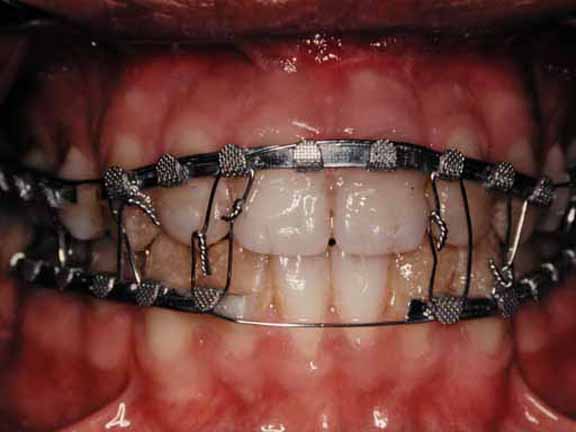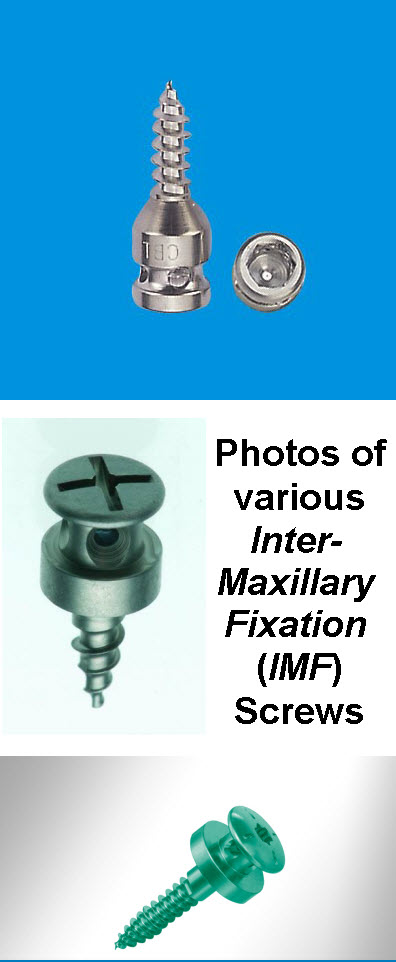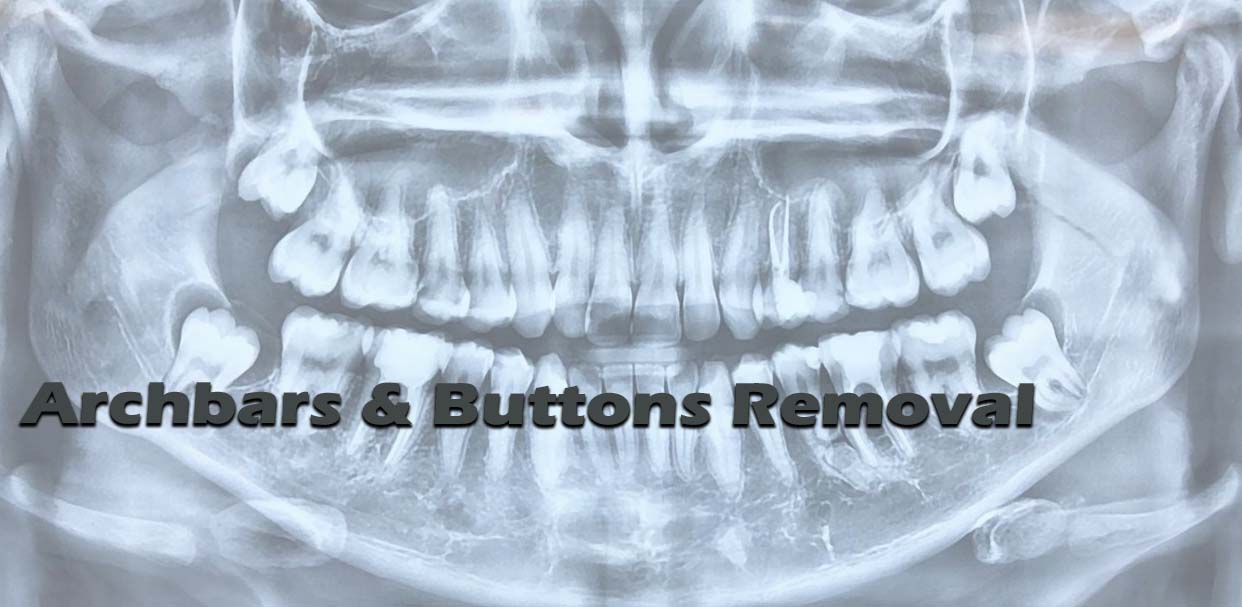Arch-bars, Leonard Buttons and IMF Screws are used to support and stabilise fractured jaws, both stabilising the jaw and the opposing jaw.
With elastics between the upper and lower jaw, it is hoped that the teeth and the way they are aligned and bite together will also correct.
Inter-Maxillary Fixation (IMF) or Mandibulo-Maxillary Fixation (MMF) is the concept of providing stabilisation to the jaws by binding the upper & lower dental occlusal arches (ie how the teeth bite together) to one another.
The most important goal in the treatment of any fracture of the maxilla (upper jaw) or mandible (lower jaw) is to re-establish the patient’s pre-injury dental occlusion (ie how the teeth bite together). IMF allows the surgeon to set & secure proper occlusion.
For some fractures, reduction and stabilisation with IMF provides adequate treatment without internal fixation and is maintained long enough to allow the fracture (or fractures) to heal.
For many (if not most) jaw fractures, IMF is a crucial step in the process of Open Reduction and Internal Fixation (ORIF). It is critical to understand that success and failure in fracture treatment are defined by occlusal outcome.
An apparent anatomic reduction can result in occlusal imperfection if proper steps are not taken to ensure correct occlusion first.
Over time, many methods have been employed to provide IMF (2 are covered here). The “first and last” principle for IMF is emphasised for cases treated by ORIF: IMF is applied first to secure occlusion; it is released last to check occlusion.


Photos of Archbars that have been wired to teeth. Elastics or wires are used to bring the archbars (and hence, teeth and jaws) together.
Removal of the archbars, Leonard buttons or IMF screws is often done without the use of anaesthesia. This is so, as to numb up the mouth would entail multiple injections for what benefit? The procedure is quick and though can be slightly sore at the time, this settles quickly.
The archbars are wired to the teeth to keep them in place. This has the knock-on effects of:
- Staining to teeth
- Early decay around the necks of the teeth
- Bleeding that is easily provoked with tooth brushing of bleeding from the gums
- (Marked) Gum recession leading to dentine sensitivity to hot and cold
- Extrusion of the teeth, with the occlusion needing time to bed in
After the archbars have been removed, you may need to take painkillers for the following 24 – 36 hours, use antiseptic mouthwashes until the gums appear healthy, and when circumstances allow, maintain good oral hygiene.

Useful Articles & Websites
Natl J Maxillofac Surg 2010. A new & easy technique for maxillomandibular fixation




 Ask Prof. Hegab
Ask Prof. Hegab +201004401598
+201004401598

